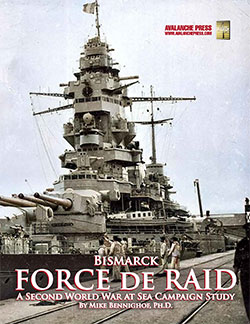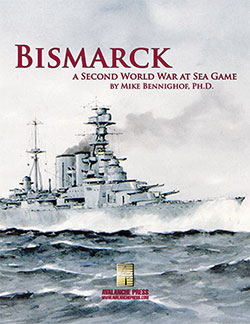Force de Raid:
French Super Destroyers:
The Jaguar Class
by Mike Bennighof, Ph.D.
August 2023
 France’s Marine Nationale entered the Great War with a standard fleet destroyer, the 800-ton type of the Bouclier and Bisson classes. Like the other participants, the French found their destroyers too small for the rugged conditions they faced, lacking the endurance and the firepower to complete their missions. They needed a bigger boat. France’s Marine Nationale entered the Great War with a standard fleet destroyer, the 800-ton type of the Bouclier and Bisson classes. Like the other participants, the French found their destroyers too small for the rugged conditions they faced, lacking the endurance and the firepower to complete their missions. They needed a bigger boat.
The French Naval Law of 1912 authorized a large force of new battleships and, for the first time, modern scout cruisers to accompany them. But it gave short shrift to destroyers, calling for 52 of them but including aging, small boats that had no business leaving coastal waters. Instead, the Naval General Staff wanted much larger boats to both fill out that number and replace the oldest, smallest boats.
The Technical Committee proposed meeting that requirement with a new destroyer displacing 1,500 tons with a maximum speed of 33 knots. It would carry either six 90mm or four 100mm guns, but the Committee would prefer a newly-developed 138.6mm Schneider gun if at all possible, to maximize the damage done to an enemy boat with a single hit.
The Marine Nationale expected to order two boats under the 1915 program, even ordering torpedoes for them and testing the geared turbines and triple torpedo tubes they would carry on the experimental destroyer Enseigne Gabolde. But Navy Minister Armand Gauthier placed the project on temporary hold, and then the outbreak of the Great War made that permanent. Design studies continued through the war as the Service Technique des Constructions Navale (STCN) which designed France’s warships kept its young naval architects employed to keep them out of the trenches.
The next formal proposal came in 1918, when it seemed that the war might end someday and then shipbuilding would resume. The 1918 destroyer would be even larger, at 1,650 tons with a speed of 35 knots and carrying three 138.6mm guns, two 75mm anti-aircraft guns and six torpedo tubes. Wartime experience showed that other Allied fleets also preferred larger and larger destroyers, with the Italians building “light scouts” (esploratori leggeri) in the 1,700-ton range and the British fielding destroyer leaders coming in at 1,500 tons.

The fine lines of the Jaguar class.
The new destroyer kept growing in size and armament, thanks to word of new Italian construction and examination of the former German super-destroyer S113, a prize of war. The Naval General Staff decided to split its destroyers into two types: a torpilleur d’escadre, or fleet destroyer, to perform the duties of torpedo attack and fleet escort. The contre-torpilleur, or “destroyer of destroyers,” would fight off enemy destroyers in a fleet action and perform scouting duties beforehand.
By 1921, the contre-torpilleur design had jumped to 2,300 tons, as intelligence filtered in about the new Italian Leone-class esploratori topping 2,000 tons. A destroyer arms race was on, and the Technical Committee would not be left behind. By the spring of 1922 the new boat’s particulars had been decided, but the Marine Nationale awaited the outcome of the Washington naval limitations talks before committing steel to slipway.
The treaty was signed in February 1922, with no limits on the size of destroyers (beyond the 10,000 tons’ displacement and 203mm guns for all warships smaller than battleships), clearing the way for France’s super-destroyers. In March the 1922 naval program authorized six of them; two would be built in naval dockyards, and four in private shipyards.
The Jaguar class would displace 2,100 tons, with much of the boat given over to its relative massive power plant, intended to put out 50,000 horsepower for a designed speed of 35.5 knots. She would carry five 130mm Model 1919 guns in single mountings, a weapon about 20 percent lighter than the 138.6mm Model 1910 but firing a shell only 12 percent lighter and offering better range. It was also a crapulent weapon with a slow rate of fire caused by difficulties in loading its complicated breech. Plans to replace it with a new-model 138mm after the boats’ completion veer went through, since the heavier new weapon would have de-stabilized the vessel.
Along with the six main guns, they retained the pair of 75mm anti-aircraft guns and six torpedo tubes of the wartime proposal. Most of them received 13.2mm anti-aircraft machine guns in place of the 75mm weapons during the 1930’s. The torpedoes would be a new, much more potent 550mm weapon; the boats did not carry reloads but did have 36 depth charges with two chutes and four throwers. However, France had no useful underwater detection system, and the boats had to rely on sighting a periscope or a lucky guess until British ASDIC gear was installed after the outbreak of war.

Destroyer Léopard seen before the war.
These were sophisticated vessels with complicated machinery, and construction took much longer than expected. When complete, only one of the boats (Tigre) met the design speed. Yet except for the two boats built by A.C. Loire (Léopard and Lynx), the machinery gave surpsiingly little trouble considering it was cutting-edge technology at the time. As a destroyer, Jaguar of course had no armor, but her hull was divided into twelve watertight compartments and she had a double bottom.
All six of the super-destroyers spent the 1930’s on training duties and long-range deployments. Jaguar, the lead ship, guarded Atlantic convoys in the early months of the war and in January 1940 suffered serious damage from a collision with a British destroyer. Repairs lasted until May, and a month later she was torpedoed off Dunkirk by a German motor torpedo boat and had to be beached and written off as a total loss.
Chacal likewise began the war escorting convoys, and in May 1940 entered the English Channel to bring demolition teams to French ports and bombard advancing German forces. German bombers struck her on the same day that Jaguar was torpedoed, and she was likewise beached and abandoned.
Tigre also worked the convoy routes, and was at the big French naval base at Mers-el-Kebir in Algeria when the British attacked the French fleet there in July 1940. With her sister Lynx she engaged a British destroyer and depth-charged a British submarine before fleeing for the naval base of Toulon on the southern coast of France. There she went into reserve, to be captured intact by the Germans in November 1942 and handed over to the Royal Italian Navy.
The Italians commissioned her as FR23, and used her as a fast transport until Italy’s surrender in September 1943, when she was handed over to the Free French. She once again escorted convoys and also bombarded targets in Italy. When the war ended, she bombarded civilians in Algeria, and afterwards saw service as a fast transport and training ship before she was scrapped in 1955.
Lynx followed the same path as Tigre, but when the Germans tried to seize the French fleet dockyard workers managed to scuttle her first. The Germans raised her in January 1944, seeking to scrap her; that wouldn’t take place until after the war.
Panthère served in the 4th Division Contre-Torpilleurs (DCT) with Tigre and Lynx, but was under refit at Toulon when the Franco-German Armistice took effect and the repair to her propellor shafts would never be completed. The Germans captured her intact, though no work had been done on her since the Armistice. The Italians completed the repairs, commissioned her as FR22 and used her as a fast transport until Italy’s surrender in September 1943, when she was scuttled at La Spezia; the wreck would be scrapped after the war.
Léopard formed the 2nd DCT with Jaguar and Chacal, and also escorted Atlantic convoys. She was at Cherbourg when the Germans captured the port, and after emptying her magazines at Rommel’s 7th Panzer Division she steamed across the Channel to Portsmouth. The British seized her in July, and handed her to the Free French in August 1940. After conversion into a long-range escort, she worked with British convoys in the North Atlantic and helped capture the Indian Ocean island colony of Réunion in November 1942. More escort work followed in the Indian Ocean and Mediterranean, where she ran aground off Benghazi in May 1943 and was declared a total loss.
By 1939, the mission for which the contre-torpilleurs had been designed – scouting for the battle fleet – had been given over to aircraft. That should have been already obvious in 1922 when they were laid down. The Jaguar class did possess a large hull and reliable machinery, which made them well-suited for conversion to long-range escorts, but only one of them survived long enough to undergo that re-construction.
 Léopard appears in Second World War at Sea: Bismarck, but doesn’t get a lot of use; she sees a great deal of action in the Campaign Study, Bismarck: Force de Raid. Léopard appears in Second World War at Sea: Bismarck, but doesn’t get a lot of use; she sees a great deal of action in the Campaign Study, Bismarck: Force de Raid.
You can order The Cruel Sea right here.
You can order Bismarck Playbook Edition here.
You can order Bismarck: Force de Raid here.
Triple Bismarck
Bismarck (Playbook edition)
Bismarck: Force de Raid
Journal No. 31: Deluxe Bismarck
Retail Price: $112.97
Package Price: $90
Gold Club Price: $72
You can order Triple Bismarck right here.
Sign up for our newsletter right here. Your info will never be sold or transferred; we'll just use it to update you on new games and new offers.
Mike Bennighof is president of Avalanche Press and holds a doctorate in history from Emory University. A Fulbright Scholar and NASA Journalist in Space finalist, he has published a great many books, games and articles on historical subjects; people are saying that some of them are actually good.
He lives in Birmingham, Alabama with his wife and three children. He will never forget his Iron Dog, Leopold.
Want to keep Daily Content free of third-party ads? You can send us some love (and cash) through this link right here.
|
